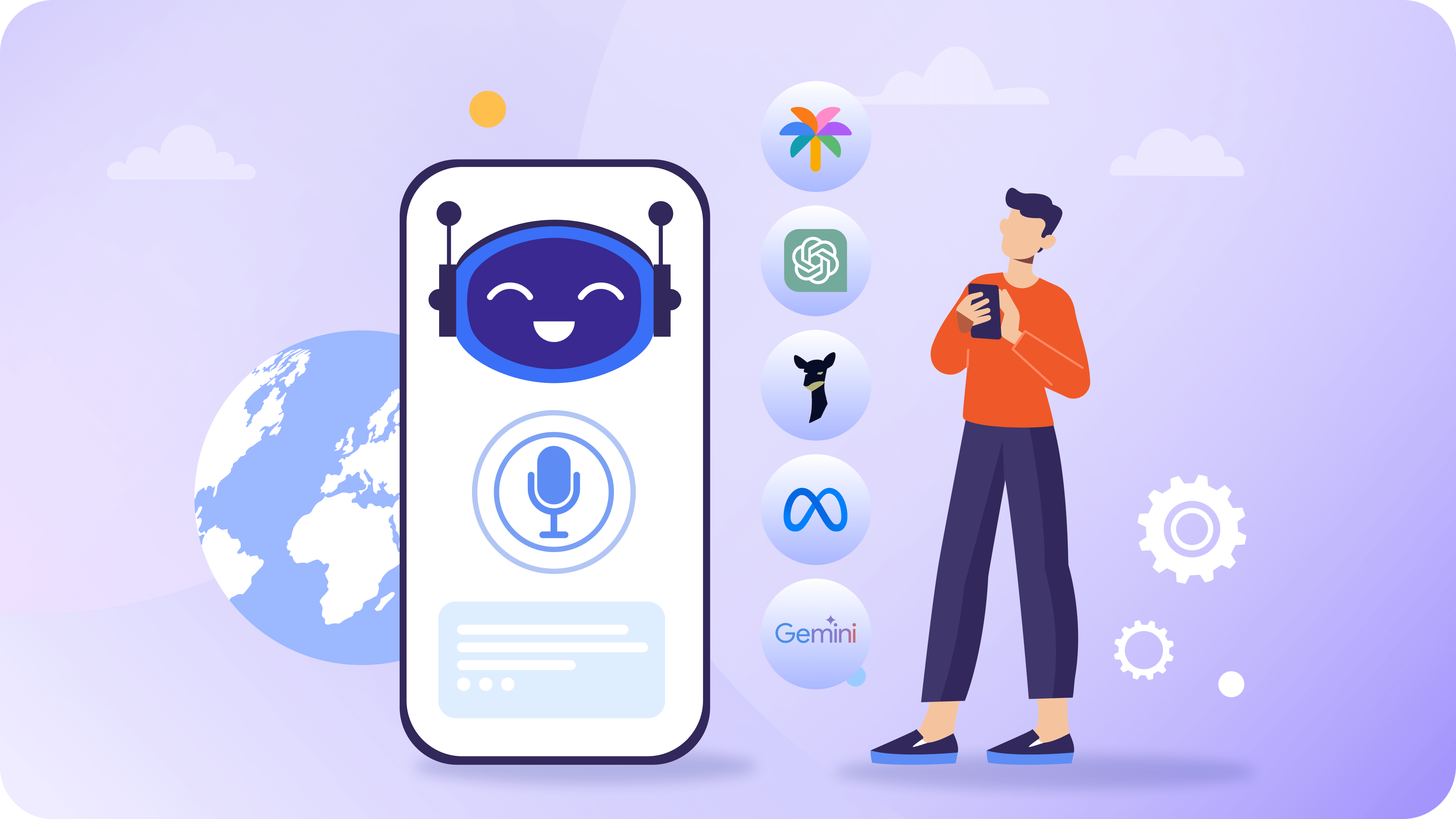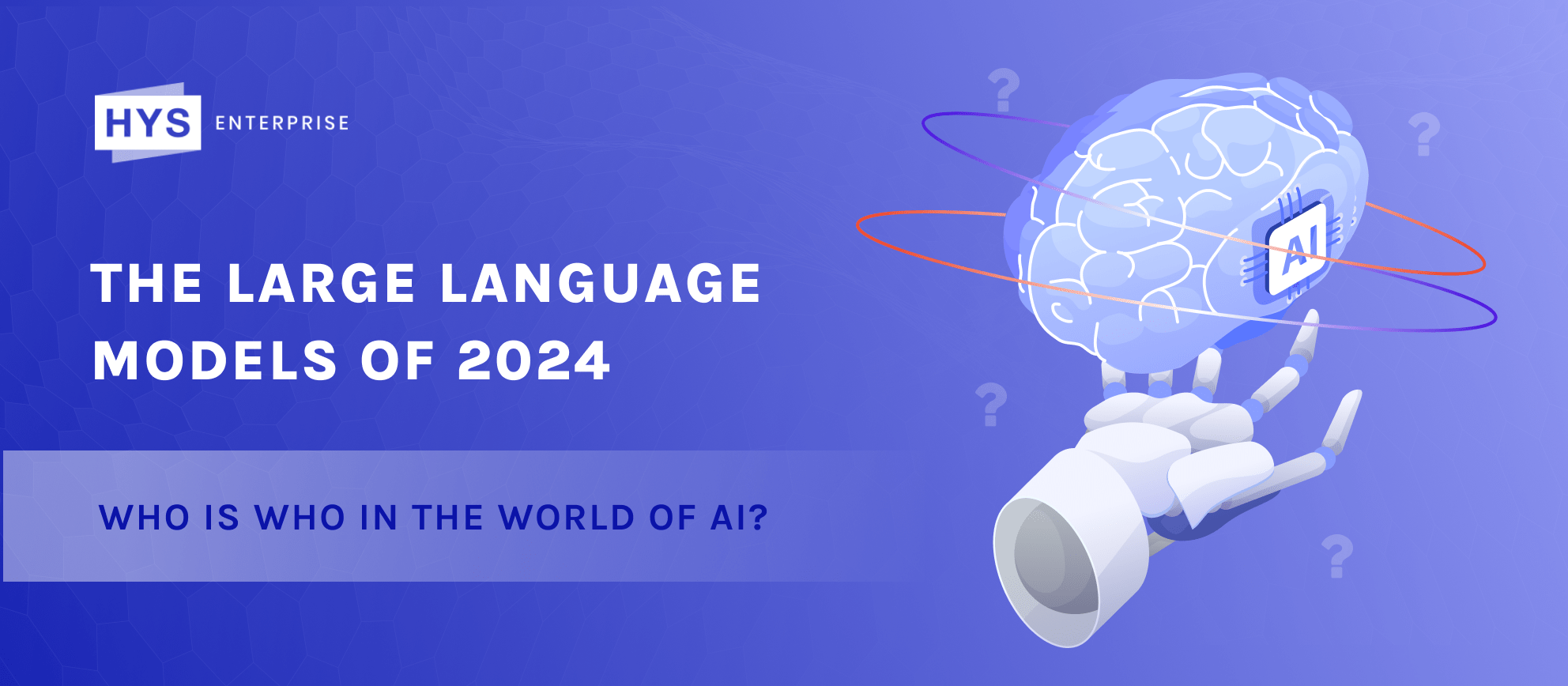What are Large Language Models (LLMs)?
An LLM, or Large Language Model, is an artificial intelligence (AI) program that perfectly understands and generates human language.
Here are some key points:
- These models are trained on massive sets of text and code, allowing them to learn complex patterns and relationships in a language.
- LLMs can understand and respond to human language in various forms, which include text, code, and even speech (in some cases). Also, they can generate different creative text formats like poems, codes, scripts, musical compositions, and more.
- LLMs are powered by sophisticated machine learning methods, like deep learning, that allow them to learn and adapt to new information and tasks.
LLMs can also be described as highly trained AI assistants who specialize in understanding and working with human language in various ways. They can translate languages, write different kinds of creative content, answer your questions informatively, and even generate different programming codes. Now that we’ve established the gist of Large Language Models, let’s finally get down to the LLMs you should pay attention to.
5 Large Language Models Worth Considering
The world of LLMs is booming, with dozens of major players and hundreds more that have potential. Listing them all would require a lot of time – the LLM landscape is constantly evolving, and new models are emerging rapidly. Prioritizing practicality, let’s focus on easy-to-use yet powerful LLMs.

GPT
Launched in late 2022, ChatGPT achieved an amazing result by reaching 1 million users in just one week. This insane growth continued, and by the beginning of 2023, the platform had exceeded 100 million monthly active users. OpenAI’s GPT models, particularly GPT-3.5-turbo and GPT-4, influenced the recent boom in AI interest. ChatGPT is likely LLM’s most well-known public application, and this result shows the power of its capabilities. Let’s consider the pros and cons of GPT.
Benefits of GPT:
- Strong Text Generation:
GPT-3 and GPT-4 are great for generating creative text formats like poems, code, scripts, musical pieces, and more. It makes them ideal for creative projects or content generation and useful for pupils, students, and workers in diverse industries.
- Accessibility:
ChatGPT models offer a user-friendly interface to interact with their services.
- Informative Responses:
GPT models are informative, they have access to the processing of vast amounts of information and can answer your questions thoroughly.
Drawbacks of GPT:
- Possibility of Potential Bias:
As with any AI trained on massive datasets, GPT models can obtain biases in the data. So it’s crucial to be aware of this disadvantage when using GPT-generated content.
- Accuracy Issues:
GPT responses may sometimes have factual mistakes or inconsistencies. It’s vital to check the GPT-generated information before using it.
- Limited Reasoning:
GPT models are better at copying human language than true reasoning or understanding. You should expect them to refrain from solving complex problems or engaging in deep philosophical discussions.
PaLM 2
PaLM 2 stands as proof of Google’s leadership in LLM’s world. This next-generation large language model was designed for excellent natural language processing, PaLM 2 plays a critical role in enabling many interactions with Google’s AI assistant, Bard. Its influence extends beyond Bard, as it silently works behind the scenes, enhancing AI features across various Google applications like Docs or Gmail. Developers can even leverage its capabilities through the PaLM 2 API, further expanding its reach and potential applications. Let’s dig deeper into the benefits and drawbacks of PaLM 2.
Benefits of PaLM 2:
- Proven Performance:
PaLM 2 has worked with real-world applications like Bard and other Google products, which demonstrates its effectiveness in natural language tasks.
- Widespread Integration:
Its presence across Google products like Docs and Gmail demonstrates its all-around ability and proficiency to enhance existing user experiences.
- Developer Access:
The PaLM 2 API can empower developers to integrate its capabilities into new applications, speeding up innovation in the LLM field.
Drawbacks of PaLM 2:
- Limited Public Access:
Although API exists, the core features of PaLM 2 are not widely accessible, potentially slowing down wider experimentation and adoption.
- Transparency Concerns:
As with many powerful AI models, some may cause concerns about the inner workings and potential biases of PaLM 2.
- Computing Requirements:
The running of PaLM 2 might require significant computational resources, which potentially limits its accessibility for smaller developers or individual users.
Gemini
Google Gemini is a groundbreaking set of AI models designed by Google. Unlike traditional LLMs focusing on text, Gemini can handle a wide range of information, such as images, audio, video, text, and even code. This makes Gemini adaptable to various devices, from smartphones to powerful servers. The Gemini family consists of three models:
- Gemini Nano is a powerful model that is optimized for on-device tasks and brings advanced AI capabilities to your mobile phone or other personal devices.
- Currently powering some queries on Google’s Bard chatbot, Gemini Pro can be described as a balance of versatility and performance, making it ideal for various applications. Developers can access Gemini Pro through Google AI Studio or Vertex AI.
- Gemini Ultra is the most powerful model in the Gemini family (expected in 2024), and it is designed for handling complex tasks that require significant computing power.
With over 140.6 million monthly visitors, Google Gemini offers a spectrum of capabilities, such as device compatibility, and it empowers developers and users with a new level of AI potential. But let’s look at the advantages and disadvantages of Gemini to be sure of the pitfalls:
Benefits of Gemini:
- Multimodal Intelligence:
Unlike many LLMs, Gemini can process and understand information beyond just text. This includes images, audio, video, and even code, making it a mighty multimodal system.
- Device Flexibility:
The Gemini family offers models designed for various devices. From the efficient Gemini Nano for smartphones to the powerful Gemini Ultra for servers, there’s a Gemini model suited for diverse needs.
- Promising Versatility:
Gemini’s capability to handle different data types opens doors for innovative applications across various fields. It has the potential to revolutionize tasks related to multimedia content and complex data analysis.
Drawbacks of Gemini:
- Newer Technology:
Compared to established LLMs, Gemini is a relatively new technology. More time is needed to evaluate its capabilities and limitations fully.
- Limited Access:
Currently, only Gemini Pro is available for developers. Wider access to Gemini Nano and Ultra (expected in 2024) will be crucial for wider adoption and exploration of their potential.
- Integration Challenges:
Integrating a multimodal LLM like Gemini into existing systems may require major changes and can create technical challenges compared to traditional text-based LLMs.
Llama 2
Llama 2, an open-source family of models developed by Meta, the company behind Facebook and Instagram, stands out in the LLM landscape. Unlike many LLMs, Llama 2 provides complete transparency and allows anyone to access and download its source code directly from GitHub. This open approach has helped Llama 2 become one of the most popular and powerful open-source LLMs available. Another significant strength of Llama 2 is its accessibility. Being free for both research and commercial applications has made it a valuable foundation for many other LLMs. Developers can use Llama 2 as a starting point, building on its capabilities to create models specially tailored for specific tasks. This collaborative approach, supported by open-source principles, is quickening innovation in the LLM field. Now, let’s explore Llama’s advantages and disadvantages.
Benefits of Llama 2:
- Open-Source Powerhouse:
Llama 2’s open-source nature allows anyone to access and modify its code, fostering transparency and collaboration within the LLM community.
- Free for All:
Being free for research and commercial use makes Llama 2 an accessible starting point for developers and researchers to build specialized LLMs.
Drawbacks of Llama 2:
- Customization Required:
Llama 2 can require more technical knowledge to be used effectively, as users may need to adapt the open-source code to their specific needs.
- Potential Security Risks:
Open-source nature contains potential security risks if code modifications are made irresponsibly.
- Support Limitations:
Since it’s open-source, users can access official support less than while using commercially licensed LLMs.
Vicuna
Vicuna distinguishes itself as an open-source chatbot built on Meta’s powerful Llama LLM. This unique combination positions Vicuna at the crossroads of research and practical application. Vicuna’s open-source nature allows researchers to access and experiment with its codebase freely. This promotes innovation and the exploration of advanced chatbot functionalities. Beyond research, Vicuna also plays a valuable role in the field of chatbot evaluation. It’s a key player in Chatbot Arena, a benchmark operated by LMSYS that provides a platform for comparing and evaluating the capabilities of different chatbots. By participating in Chatbot Arena, Vicuna helps to push the boundaries of chatbot performance and establish best practices in the field. Let’s also assess the pros and cons of Vicuna.
Benefits of Vicuna:
- Open-Source Arena:
Vicuna’s open-source code allows researchers to freely explore and experiment, accelerating the development of chatbot features.
- Conversational Strength:
Modified for massive amounts of real-world conversations, Vicuna is a perfect solution for tasks related to chatbot development and NLP research.
- Research Powerhouse:
Built on the strong foundation of Meta’s Llama LLM, Vicuna offers researchers a powerful tool for exploring advanced chatbot capabilities.
Drawbacks of Vicuna:
- Limited User Interface:
As an open-source research tool, Vicuna might not have a user-friendly interface that is easily accessible to non-technical users.
- Customization Needs:
Similar to Llama 2, leveraging Vicuna’s full potential might require additional technical expertise to adapt the code to specific use cases.
Nowadays, LLMs have become powerful tools for understanding and manipulating language. From the creative spark of GPT to PaLM 2’s real-world applications, these models offer a range of strengths and prospects for users. Open-source options like Llama 2 encourage collaboration, while Vicuna pushes chatbot boundaries. As the LLM landscape evolves, consider your needs and prioritize models that match the goals and values of your enterprise. If you have additional questions or are in search of a dependable partner to fulfill your project – Don’t wait to get in touch with us today!
